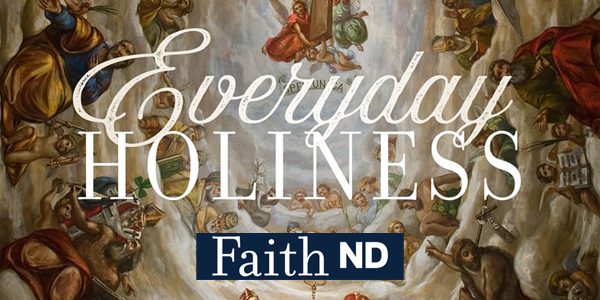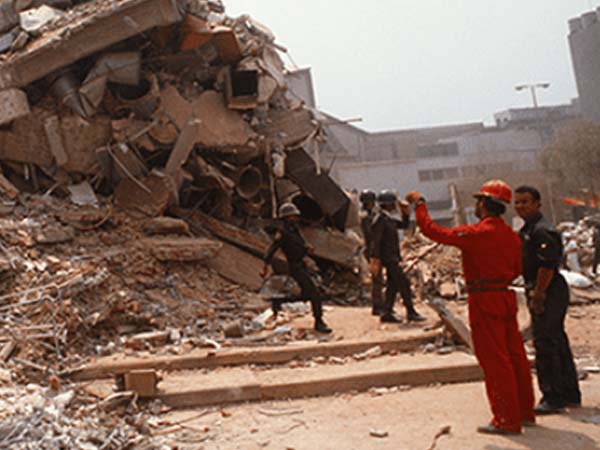Raphael’s School of Athens: What is Fresco Painting? Materials and Process
Subscribe to the ThinkND podcast on Apple, Spotify, or Google.
Featured Speakers:
- David Mayernik, Associate Professor, School of Architecture, University of Notre Dame
In Week 1 of the Rome Bookclub series on Raphael’s School of Athens, David Mayernik, Associate Professor in the School of Architecture was joined by Professor Richard Piccolo, also of the School of Architecture. The professors introduced the listeners to the fresco. They answered the questions: What skills did Raphael need to paint in fresco? How is painting on a wall different from painting on an easel? What is the connection between manual and cognitive ability – do they facilitate each other, or get in the way? They also touched on modern fresco painting in Italy and America.
Mayernick began the discussion by asking Piccolo about his experience painting murals and how painting on a wall is different from painting on an easel. Piccolo replied that it is “dramatically different” in that with painting on an easel, the entire painting is in your field of vision, while when painting on a wall or ceiling, this is not the case. This makes it very difficult and impractical to improvise as you need to constantly step back and adjust the work. Piccolo recounted his experience painting a ceiling and said the difficulty lay in “ the proximity of the surface itself as you’re looking up and not horizontally […]I had to figure out how to see enough of my surroundings” (11:00). Mayernick added that the plaster walls were quite cold and that fresco artists often had certain times of the year in which they would take on work. This was due to both the cold temperatures and lack of natural light in the winter months.
Next, the speakers discussed the connection between manual and cognitive ability. Mayernick likened the connection to a musician learning to play notes vs. creating music: “there is the manual dexterity just to be able to execute the notes and then there’s all the otehr stuff that makes it music and not just a bunch of notes”. Piccolo noted that many of Raphael’s contemporaries had much of the same training, but what “Raphael did with what he knew”. On the other hand, Mayernick said that “there’s a lot more to the school of athens than craft, but it is the thing that allowed him to make that sophisticated composition come to life” ( 20:00).
Lastly, they spoke about modern fresco painting in Italy and America. Piccolo noted that fresco painting has “always been important in italy. It’s a part of heritage and way of thinking, even architecturally” (30:00). In Italy, there’s an idea that the fresco is part of the building – it belongs in a specific place and is not to be removed. It is considered with the architecture; it’s integral. However, this is an art form that is difficult to popularize in the modern world. Piccolo commented that frescos “defy movability and change, which is contrary to our modern society” (35:00).
- Painting on walls is difficult because of the difference between surface area and the artist’s field of vision while painting (10:00)
- Raphael exhibited excellent technique, but his ability to go beyond technique made him special (17:00)
- There has long been a tradition of fresco/mural painting in public spaces in the US (influence with Europe), but is difficult to continue in modern society
- “You didn’t want to improvise too much because if you didn’t like what you were doing you’d have to take all the plaster off and re plaster” (Mayernick 15:00)
- “That’s part of being an artist- some things don’t work, some things you have to change” (15:30 Piccolo)
- “Rafael seemed to have a different painting technique for every medium he worked in” (Mayernick 17:00)
- “There’s a lot more to the school of athens than craft, but it is the thing that allowed him to make that sophisticated composition come to life (Mayernick 20:00)
- It defies movability and change, which is contrary to our modern society (35:00 piccolo)
Related Content
Shannon Sharpe/Katt Williams, The Black Impact on the NFL Super Bowl & Taraji P Henson
In the first episode for Season 8, Isaiah and Tykiera talk about the Shannon Sharpe/Katt Williams Interview that took the internet by storm at the beginning of the year as well as...
watch videoEveryday Holiness: John Cavadini
Dr. John Cavadini, director of the McGrath Institute for Church Life and professor in the theology department at the University of Notre Dame, shares some of the hidden aspects...
View EventClimate Change and The Limits of Narrative
Join the Kellogg Institute for the introductory session of a workshop refining Kellogg Faculty Fellow Roy Scranton’s draft book project “Ethical Pessimism: Climate Change and...
View Event


